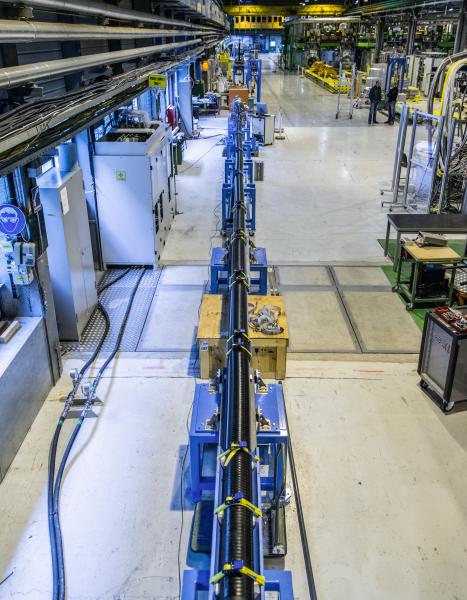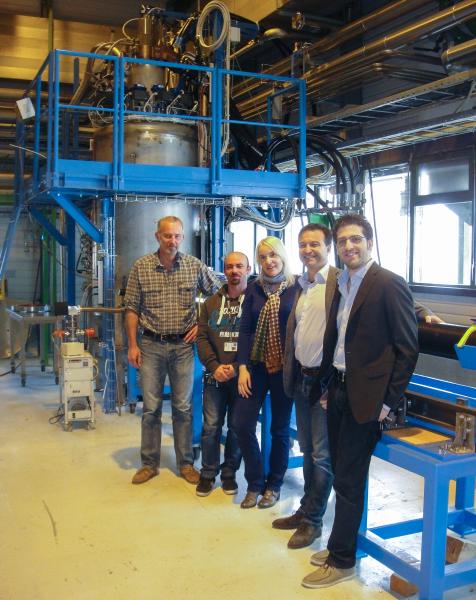In the framework of the High-Luminosity LHC project, experts from the CERN Superconductors team recently obtained a world-record current of 20 kA at 24 K in an electrical transmission line consisting of two 20-metre long cables made of magnesium diboride (MgB2) superconductor. This result makes the technology a viable solution for long-distance power transportation.

"The test is an important step in the development of cold electrical power transmission systems based on the use of MgB2," says Amalia Ballarino, head of the Superconductors and Superconducting Devices section at CERN. "The cables and associated technologies were designed, developed and tested at CERN. The superconducting wire is the result of a long R&D effort that started in 2008 between CERN and the manufacturer, Columbus Superconductors in Genova, Italy."
The result was achieved at a temperature of 24 K (about -249 ˚C) using a test station that was purpose-designed and assembled at CERN. The temperature is kept homogeneous over the 20-metre length of the line by a forced flow of helium gas. Following intense development, the full 2 x 20-metre long MgB2 superconducting line was successfully powered to the world-record current of 20 kA, showing that this technology has great potential for the transmission of electrical power.
The superconducting properties of this relatively cheap material were discovered in 2001, but conductor technology only existed in the form of tape. Round wire, which is more appropriate for assembling into high-current cables, was not available when the CERN project started. "First, it was necessary to develop quality round wires adapted for use in this project, with high current density and uniform superconducting properties," says Ballarino. "This work was done through a close collaboration between CERN and Columbus Superconductors, which manufactured different generations of wires with different architectures and with improved properties. In parallel, we at CERN developed the high-current cables and the electrical transmission line."

The project is part of the FP7 Hi-Lumi LHC Design Study. In the high-luminosity LHC configuration, the power converters supplying current to the superconducting magnets will be moved from their present location in the LHC tunnel to the surface or to radiation-free underground areas and they will be connected to the magnets through a new cold powering system. A dedicated study in 2009 confirmed that electrical transfer lines based on the use of MgB2 superconductor, having a critical temperature of 39 K, could be a viable and economical technology, bringing several advantages with respect to the conventional Nb-Ti bus cable used today for the LHC.
Further to the CERN initiative, MgB2 superconducting technology was also proposed by Carlo Rubbia, scientific director of the Institute for Advanced Sustainability Studies (IASS) in Potsdam, Germany, for an innovative transmission line for long-distance transport of green power.
"MgB2 superconducting cables cooled by liquid hydrogen have been proposed for use in long-distance underground power transmission lines, with periodically spaced cryogenic cooling stations. A collaboration agreement between CERN and IASS was signed in March 2012 with the objective of proving the feasibility of the technology," says Ballarino. "The development was aimed at testing a 20 kA DC line operated at 20 K (-253 °C), which was also conveniently close to the CERN requirement for powering the magnets. The result of our tests is a demonstration that such high-current cables can be operated at and above the temperature of liquid hydrogen, and that the basic related technology is now proven."
